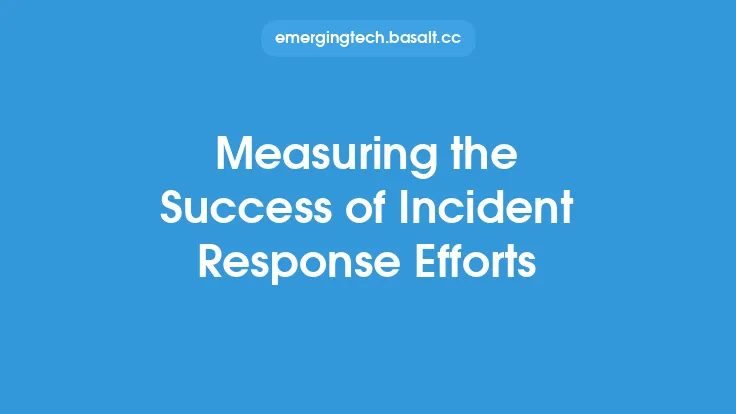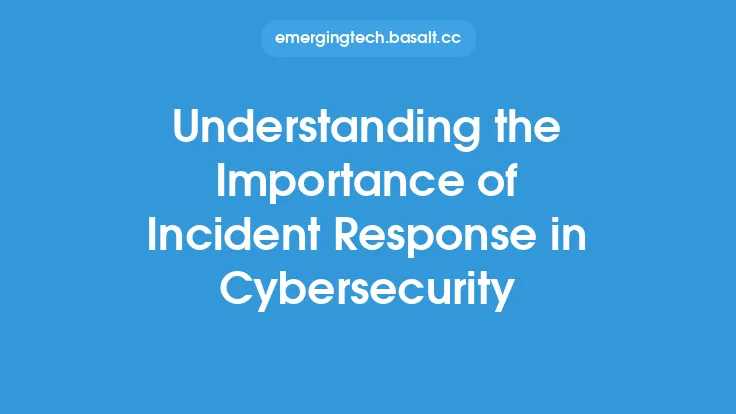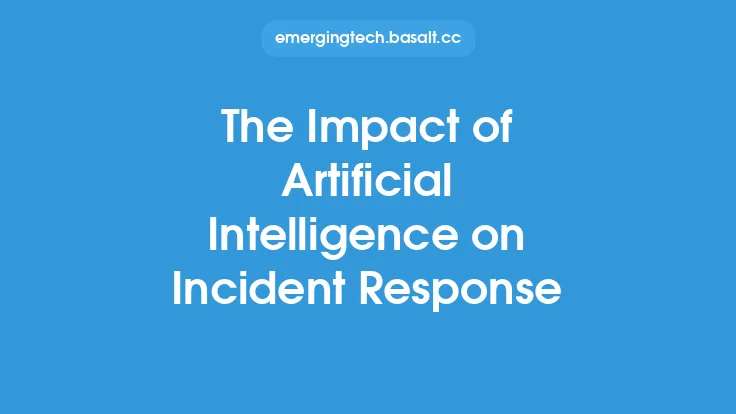When it comes to cybersecurity, one of the most critical aspects of maintaining the integrity and continuity of an organization's operations is the ability to respond effectively to incidents. An incident, in this context, refers to any event that compromises the security of an organization's computer systems, networks, or data. This could range from malware outbreaks and unauthorized access attempts to data breaches and denial-of-service (DoS) attacks. The primary goal of incident response is to minimize the impact of such events, ensuring that downtime is reduced, and business operations can resume as quickly as possible.
Understanding Incident Response Strategies
Incident response strategies are designed to provide a structured approach to handling security incidents. These strategies typically involve several key components, including detection, containment, eradication, recovery, and post-incident activities. Detection involves identifying that an incident has occurred, which can be through monitoring systems, user reports, or automated detection tools. Containment is the process of limiting the spread of the incident to prevent further damage. Eradication involves removing the root cause of the incident, such as deleting malware or closing vulnerabilities. Recovery focuses on restoring systems and data to a known good state, and post-incident activities involve reviewing the incident to identify lessons learned and areas for improvement.
Minimizing Downtime through Proactive Measures
Minimizing downtime during an incident requires proactive measures. One of the most effective strategies is to implement redundancy in critical systems. This means having backup systems or data centers that can take over immediately if the primary systems are compromised. Another approach is to use high availability clustering, where multiple servers work together to provide continuous service, even if one server fails. Regular backups and disaster recovery planning are also crucial. Backups ensure that data can be restored quickly, and a disaster recovery plan outlines the steps to be taken to restore operations in the event of a disaster.
Technical Considerations for Incident Response
From a technical standpoint, several tools and technologies can aid in incident response and minimize downtime. For example, intrusion detection and prevention systems (IDPS) can help detect and block malicious traffic. Incident response teams can also use virtualization and containerization technologies to quickly spin up replacement systems or isolate affected areas. Network segmentation is another key strategy, where the network is divided into smaller segments, each with its own access controls. This can help contain the spread of an incident. Additionally, the use of security information and event management (SIEM) systems can provide real-time monitoring and analysis of security-related data, helping to identify incidents early.
Role of Automation in Incident Response
Automation plays a significant role in minimizing downtime during incident response. Automated systems can detect incidents faster and more accurately than human operators, and they can initiate response actions without delay. For instance, automated scripts can be used to block malicious IP addresses, apply patches, or restore systems from backups. Automation can also help in the eradication phase by automatically removing malware or closing vulnerabilities. However, while automation is powerful, it must be carefully configured and monitored to ensure that it does not inadvertently cause additional problems, such as blocking legitimate traffic or applying incorrect patches.
Training and Exercises for Effective Incident Response
Effective incident response also requires well-trained personnel. Incident response teams should undergo regular training and participate in exercises to ensure they are prepared to handle various types of incidents. These exercises, often referred to as tabletop exercises or simulations, mimic real-world scenarios, allowing teams to practice their response in a controlled environment. Training should cover technical skills, such as forensic analysis and system recovery, as well as soft skills, like communication and decision-making under pressure. Moreover, incident response plans should be regularly reviewed and updated to reflect changes in the organization's infrastructure, new types of threats, and lessons learned from previous incidents.
Continuous Improvement in Incident Response
Finally, continuous improvement is key to maintaining effective incident response strategies. This involves regularly reviewing incident response plans, updating procedures based on new threats and technologies, and conducting post-incident reviews to identify areas for improvement. Feedback from these reviews should be used to refine the incident response process, ensuring that the organization is better prepared to handle future incidents. Continuous monitoring of systems and networks is also essential, as it helps in early detection of potential incidents. By adopting a mindset of continuous improvement, organizations can ensure their incident response strategies remain effective and aligned with the evolving cybersecurity landscape.
Conclusion
In conclusion, minimizing downtime during cybersecurity incidents requires a combination of proactive measures, technical capabilities, automation, trained personnel, and a commitment to continuous improvement. By understanding the principles of incident response, implementing redundancy and backup systems, leveraging automation, and ensuring that incident response teams are well-trained and equipped, organizations can significantly reduce the impact of security incidents. As cybersecurity threats continue to evolve, the importance of effective incident response strategies will only grow, making it a critical component of any organization's cybersecurity posture.





